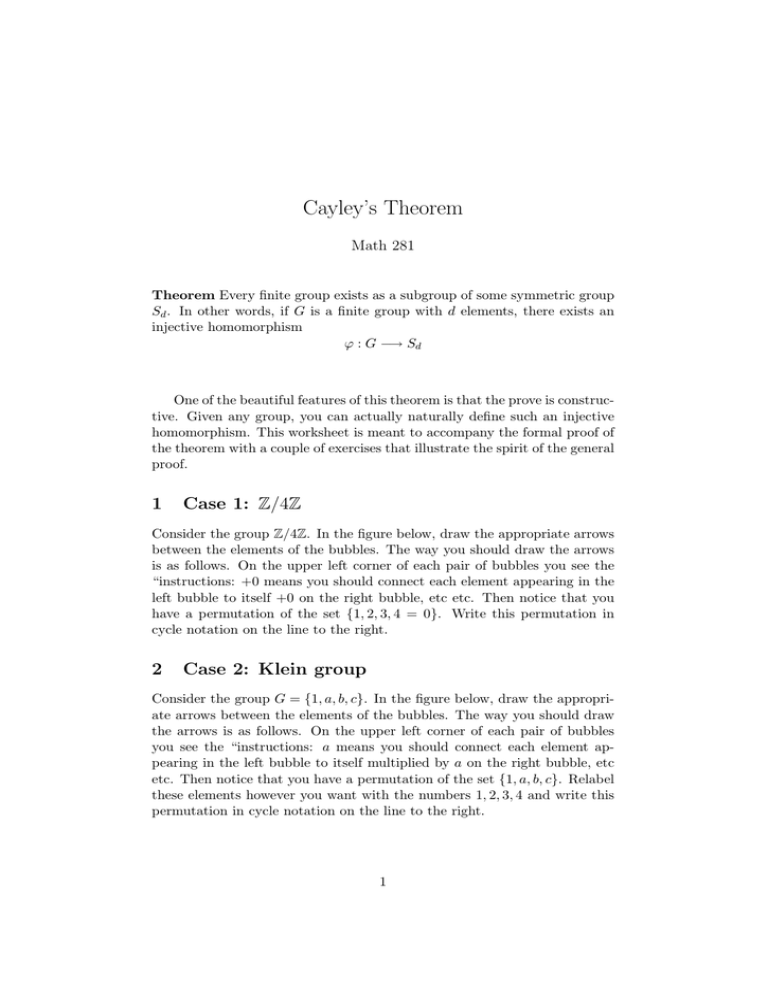Cayley’s Theorem Math 281
advertisement

Cayley’s Theorem
Math 281
Theorem Every finite group exists as a subgroup of some symmetric group
Sd . In other words, if G is a finite group with d elements, there exists an
injective homomorphism
ϕ : G −→ Sd
One of the beautiful features of this theorem is that the prove is constructive. Given any group, you can actually naturally define such an injective
homomorphism. This worksheet is meant to accompany the formal proof of
the theorem with a couple of exercises that illustrate the spirit of the general
proof.
1
Case 1: Z/4Z
Consider the group Z/4Z. In the figure below, draw the appropriate arrows
between the elements of the bubbles. The way you should draw the arrows
is as follows. On the upper left corner of each pair of bubbles you see the
“instructions: +0 means you should connect each element appearing in the
left bubble to itself +0 on the right bubble, etc etc. Then notice that you
have a permutation of the set {1, 2, 3, 4 = 0}. Write this permutation in
cycle notation on the line to the right.
2
Case 2: Klein group
Consider the group G = {1, a, b, c}. In the figure below, draw the appropriate arrows between the elements of the bubbles. The way you should draw
the arrows is as follows. On the upper left corner of each pair of bubbles
you see the “instructions: a means you should connect each element appearing in the left bubble to itself multiplied by a on the right bubble, etc
etc. Then notice that you have a permutation of the set {1, a, b, c}. Relabel
these elements however you want with the numbers 1, 2, 3, 4 and write this
permutation in cycle notation on the line to the right.
1
+0
1
2
3
4=0
1
2
3
0=4
+1
1
2
3
4=0
1
2
3
0=4
+2
1
2
3
4=0
1
2
3
0=4
+3
1
2
3
4=0
1
2
3
0=4
2
1
1
1
a
a
b
b
c
c
a
1
1
a
a
b
b
c
c
b
1
a
b
c
1
a
b
c
c
1
a
b
c
1
a
b
c
3


